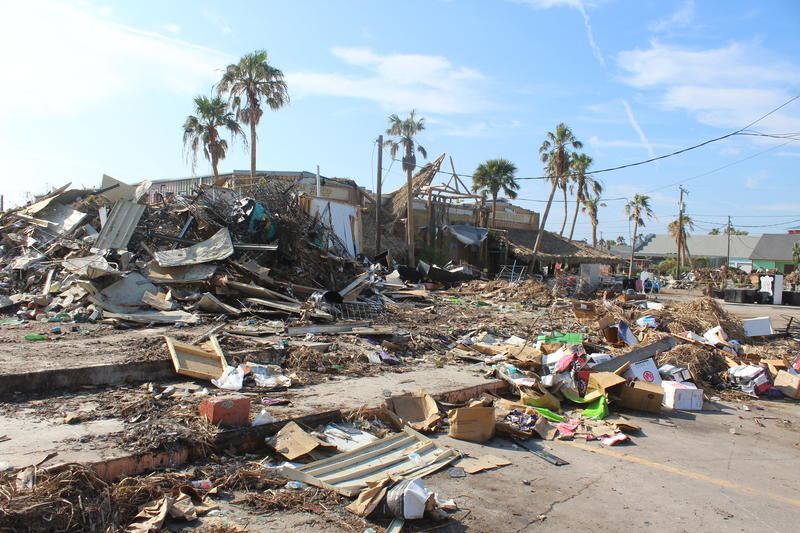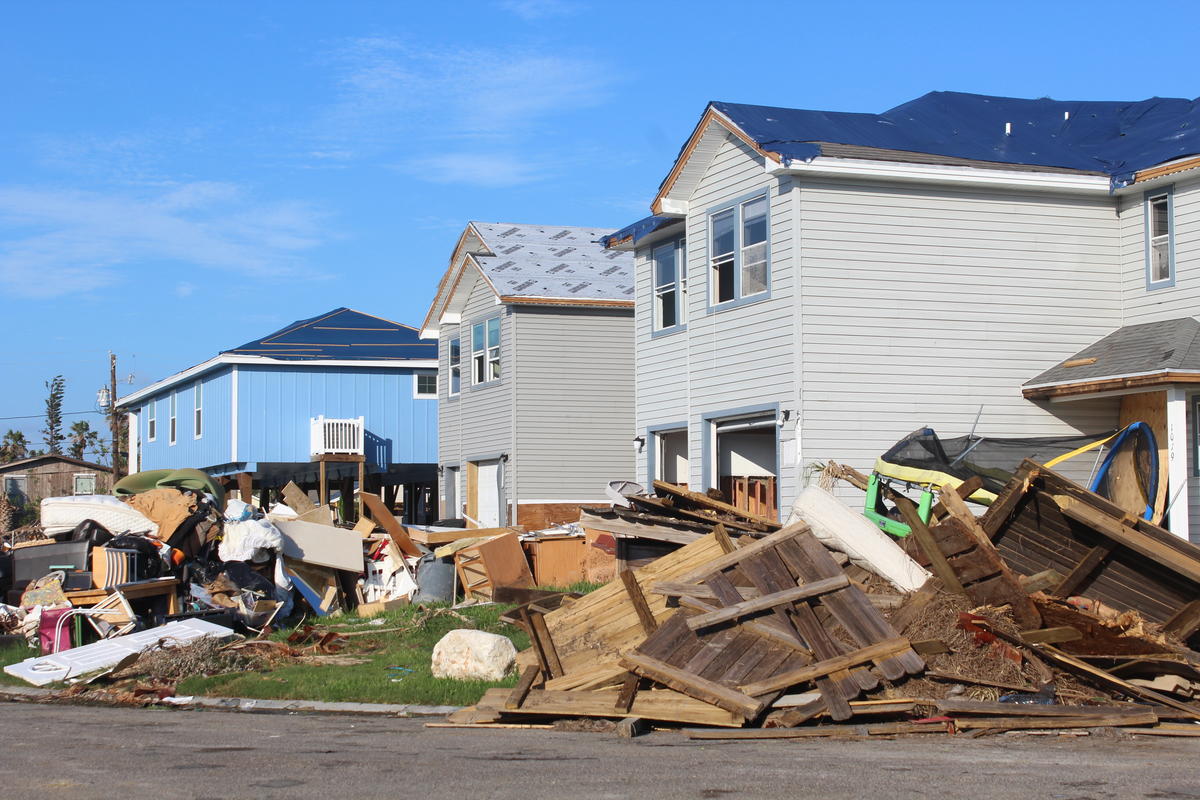From Texas Public Radio:
Today marks one month since Hurricane Harvey made landfall on the Texas Gulf Coast. One of the hardest-hit areas was Port Aransas on Mustang Island. For decades, Port A’s been a popular destination for Texans looking for a weekend beach or fishing getaway. The small city of 3,800 people could grow to 50,000 or 60,000 during peak tourist season.
Hurricanes and tropical storms have mostly spared the island but Harvey damaged, destroyed or flooded most buildings on the island. All this week, we’re exploring Port Aransas’s long road to recovery. Volunteers and utility workers have turned the city into intro a construction zone and residents are contemplating whether to rebuild, or move.
One of the two ways to get to Port Aransas is by ferry. It’s operating as usual, carrying cars and passengers from Aransas Pass on the mainland to Mustang Island.
Once on the island, though, it’s hard to tell a whole month has passed since Harvey hit.
“Everything’s destroyed. You can see it driving around,” says Don Murphy, an electrical contractor.
He’s waiting with three others outside EATS, a restaurant near the ferry landing. EATS served free hot meals in the days after Harvey but, right now, it’s closed. Murphy’s hoping they’ll open for breakfast. He says he’s lived in Port Aransas for four decades, and, so far, he’s felt lucky.
“I’ve been waiting ten years for this storm. We all knew it was coming,” he says.
Just over a century ago – in 1916 – another hurricane basically wiped Port A off the map.
Today, Murphy calls Port A a “warzone.” Trees and electrical poles are cracked and bent. Siding is stripped from buildings. Chunks of people’s homes sit on the curb along with mattresses, furniture, and personal belongings…all turned to trash by wind and flood water. All across the city, debris piles are stacked taller than people. Parking lots serve as makeshift dumps. And Murphy’s home:
“Yeah it took a beating. My other property, I have a martial arts school. It’s destroyed. I’m digging it out. My electrical shop, it was destroyed; tools and everything. We got it put it together. We’re running fixing things for people,” Murphy says.
And just about everyone on the island could use the help. Officials say 80 percent of the buildings in Port Aransas were damaged or destroyed.
City Hall is packed with staff. Desks are in hallways, and city employees, even the librarians, are fielding calls from the public. In his office, Mayor Charles Bujan sports a red “Make Port Aransas Great Again” hat.
“That’s something a lady gave to me on in one of the devastated areas. Because that hat right there is what our people believe. We’re going to make Port Aransas great again,” he says.
And what will it take to do that?
“Years,” the mayor says. “A lot of help from the government; state and federal.”
He lists off progress so far: Water and sewer service are back. So is electricity, but not everyone is connected back to the power grid. Electricians are still inspecting homes, making sure sea water hasn’t damaged wiring. Right now, Debris cleanup is the mayor’s highest priority.
“That’s going to take another month or two to do that,” he adds.
The Federal Emergency Management Agency’s helping with debris. It’s also the go-to agency when people need financial assistance. Port Aransas’s community center has transformed into a base of operations for FEMA and Small Business Administration workers.
“This is a beautiful community. We don’t want people to leave,” says Paul Corah, a spokesperson for FEMA. “ We’ve seen this happen in Katrina where people will leave totally neighborhoods. It takes years and years and it just devastates neighborhoods if they go away.”
Right now, about 20 people wait in line to apply for aid, stacks of paper in hand. FEMA has already approved at least $8 million in grants to residents in Nueces County and adjacent counties. Corah says the average approved grant is for about 35-hundred dollars.
“We want to rebuild. We don’t want people moving out,” Corah adds.
Mayor Bujan is cautiously optimistic.
“We’re a sea people, and we understand what the ocean can do. We choose to live here and we understand that it can do to us. So we’re willing as a people to live here because we live it and that determination drives us all,” Bujan says.
He believes many residents are prepared to bring Port Aransas back, from the ground up.
















